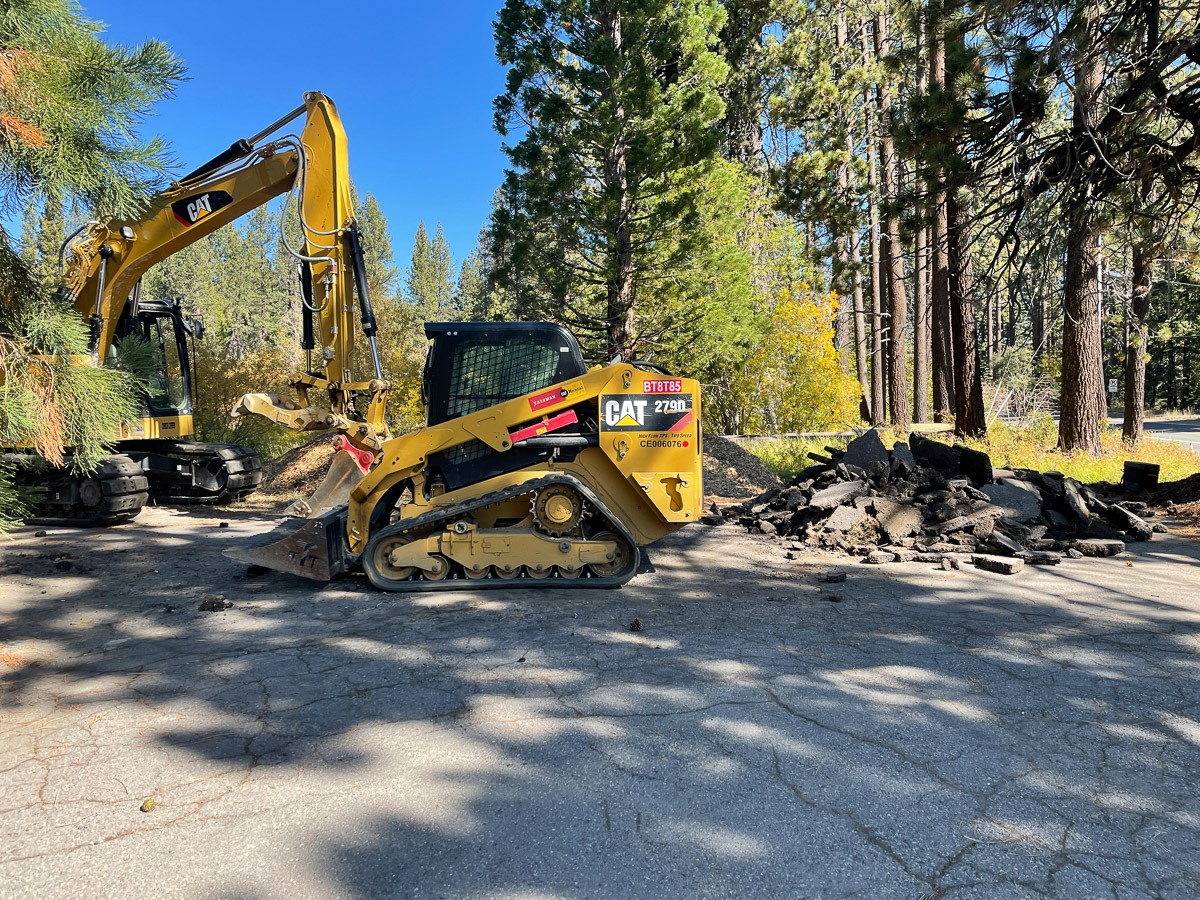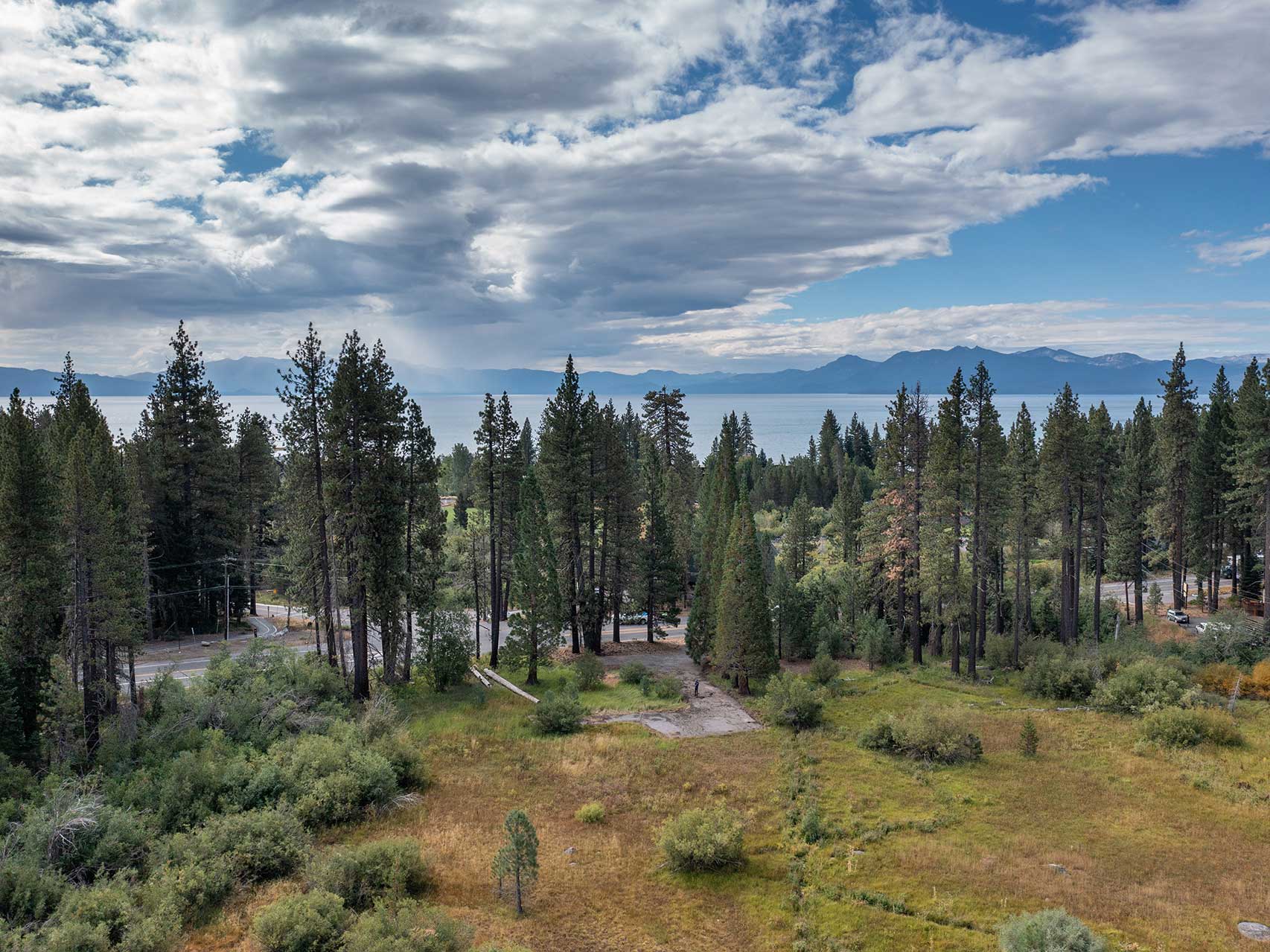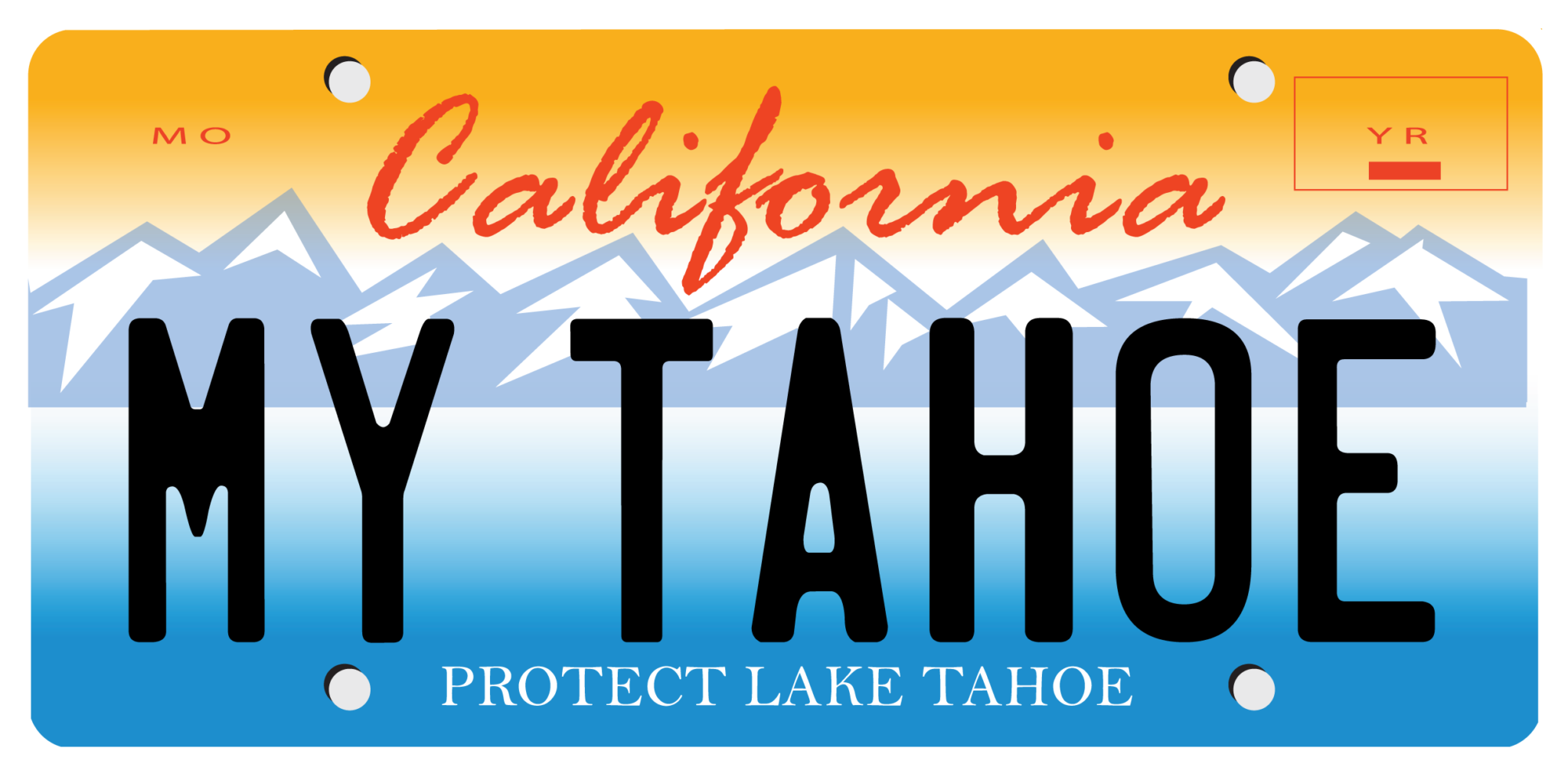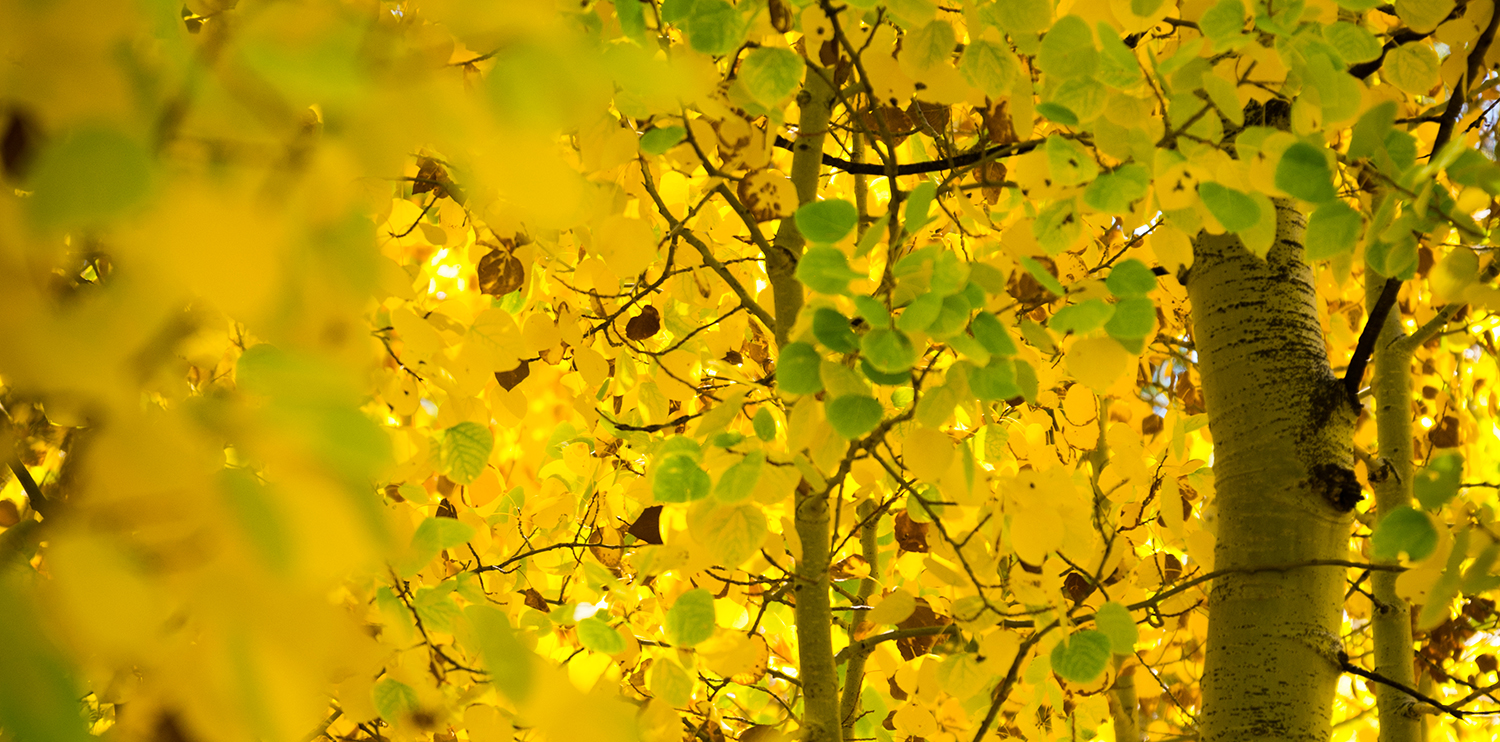
October 2022 Conservancy Newsletter
Published: Oct 27, 2022
Work is accelerating on the State’s goal to conserve 30 percent of California’s land and coastal waters by 2030. As outlined below, the Conservancy is contributing to this body of work, which seeks to protect biodiversity, advance equitable access to nature, and combat climate change through nature-based solutions.
Jason Vasques, Executive Director
California Tahoe Conservancy
Improving Accessibility to Lake Tahoe
A key trail to Lake Tahoe has reopened at the Upper Truckee Marsh following the Conservancy’s work to improve accessibility to all users. The unpaved, shared-use trail runs approximately a half mile from the east end of Venice Drive to a beach at the Lake. The Conservancy hardened the trail surface, making it easier for people using wheelchairs, strollers, and bicycles to access the shoreline. By using decomposed granite instead of asphalt, the trail also blends in better with the Marsh’s environment and will last longer.
These trail improvements are one component of the Conservancy’s nearly complete Upper Truckee Marsh Restoration Project. The Conservancy is restoring and enhancing habitat across hundreds of acres at Tahoe’s largest remaining wetland, making it more resilient to climate change.
More Meadow, Less Asphalt

The Lake Tahoe Basin (Basin) has lost half its meadows and 75 percent of its marshes to development. That’s why, nearly 30 years ago, the Conservancy jumped on the chance to acquire and reclaim four acres within a wet meadow along Highway 28 near Tahoe City. This month, we returned to this property to complete a key task: removing 5,000 square feet of asphalt.
In 1993, the Conservancy acquired the property to preserve and restore its environmentally sensitive land. Located in an open spring-fed meadow, the lot included a home and detached garage along with an asphalt driveway and parking area. As a condition of acquisition, the prior owners removed the structures, but the asphalt remained. At the time, the Conservancy had recently acquired thousands of such properties, and lacked the resources to restore every lot that needed attention.
After removing the asphalt this month, our Land Management team and field crew—a partnership with Tahoe Resource Conservation District (Tahoe RCD)—loosened compacted soils, stabilized the site by spreading mulch, and revegetated the area with native seeds.
Removing the asphalt improves the property’s benefits for wildlife habitat and as a natural filter for water draining to Lake Tahoe. This project helps further the Conservancy’s original vision for the property when it acquired the lot nearly 30 years ago.

Prescribed Fire Season Returns to Lake Tahoe
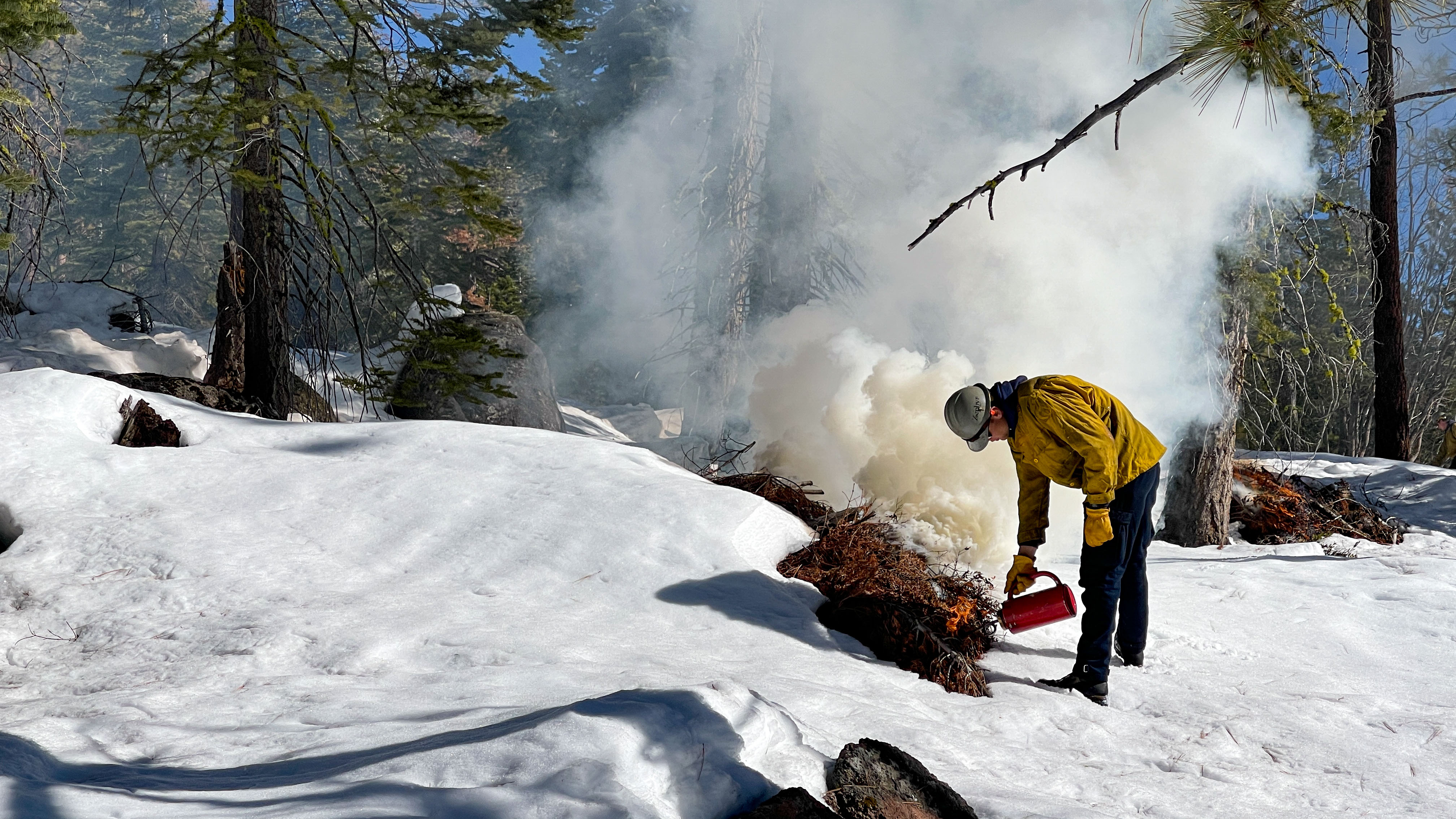
The Tahoe Fire & Fuels Team (TFFT) fall prescribed fire program has begun. California State Parks has already kicked off understory burning at Sugar Pine Point State Park on Lake Tahoe’s west shore, and other TFFT partners, including the Conservancy, have upcoming projects in the works.
Prescribed fire is an important tool used by land managers to remove excess vegetation (fuels) that can feed wildland fires and to help protect communities from extreme wildfires. Burning excess vegetation also recycles nutrients back into the soil and helps reduce the spread of insects and disease in forests. The Conservancy will continue to use prescribed pile burns at Van Sickle Bi-State Park and at its Dollar property near Tahoe City, as well as other properties around the California side of the Basin.
Fall and winter typically bring cooler temperatures and precipitation, which are ideal for conducting prescribed fires. Each operation follows a specialized burn plan, which considers temperature, humidity, wind, vegetation moisture, and smoke dispersal conditions. Land managers and fire agencies use all this information to decide when and where to safely burn.
Visit the Tahoe Living With Fire website to learn more about the TFFT prescribed fire program.
Photo: Zephyr Crew members with the Tahoe Douglas Fire Protection District burning piles at the Conservancy’s Dollar Project last January.
Forestry Crew Wrapping up its Season

The Conservancy’s Forestry Crew, also in partnership with Tahoe RCD, is busy at work as the field season nears an end. The Forestry Crew improves forest health and reduces wildfire risk to the community through its work on Conservancy properties within residential areas around the California side of the Basin. Crew members reduce hazardous fuels on forested lots, thinning excess trees and brush, and remove hazard trees. (A hazard tree is a dead or dying tree that is about to fall and has a target, such as a neighboring house or other structure.) Stay tuned for a full wrap-up on the Crew’s 2022 activities.
Van Sickle Bi-State Park, Tahoe Pines Facilities Close for Winter

Gates and facilities at Van Sickle Bi-State Park will close for the winter on November 1. The park grounds remain open all year to pedestrians. The Conservancy co-manages the 725-acre park with Nevada State Parks. During the winter, the park provides day-use opportunities for hiking, cross-country skiing, and snowshoeing. For visitor safety, sledding is not allowed.
The winter season closure affects the park’s roads, parking lots, restrooms, and drinking fountains. During winter, guests must park legally, without blocking gates. Trash collection is also suspended until spring. The Conservancy reminds visitors to pack out all trash.
Winter visitors can access the park on foot, bike, skis, or snowshoes via its main entrance at the intersection of Heavenly Village Way and Montreal Road in South Lake Tahoe.
The Conservancy will also close the parking lot at its Tahoe Pines property in Meyers. The grounds will remain open to foot traffic all winter. To protect public safety, sledding is not allowed at Tahoe Pines.

Destination Stewardship Planning Survey
The Lake Tahoe Destination Stewardship Plan continues to take shape, with additional opportunities for you to offer input. Lake Tahoe partners have been holding public workshops this month, and invite residents of the greater Lake Tahoe region, including Truckee, to participate in their survey. The Destination Stewardship Plan aims to create a shared approach to balancing the needs of the environment, businesses, visitors, and local communities to safeguard the quality of the Lake Tahoe area experience.

We’re Hiring
Want to join a great team working to protect a national treasure? The Conservancy has openings in our legal, lands, and natural resources divisions:
Conservancy Staff Updates
New Employees

Samantha Sellers
Graduate Legal Assistant
Samantha Sellers joined the Conservancy as a Graduate Legal Assistant in September. Samantha is part of the legal team and will be working on California Environmental Quality Act matters, land bank transactions, and land management issues. She will also be helping with Board meeting preparation and compliance with open meeting laws. Samantha earned her Juris Doctor degree at the University of California, Davis, with an emphasis in environmental law and a certificate in pro bono services. During law school, she interned with the California Rural Legal Assistance Foundation and Natural Resources Defense Council, and was a member of the UC Davis Aoki Water Justice Clinic. Prior to law school, Samantha was a field research assistant studying stream morphology, analyzing the stability of stream channels and overall stream ecological health in areas affected by wildfire burns in the Colorado Rockies.
Upcoming California Tahoe Conservancy Board Meetings
The California Tahoe Conservancy Board will meet on December 15, 2022. An agenda will be available on the Conservancy website ten days prior to the meeting.
Lake Tahoe in the News
Housing affordability project celebrated in South Lake Tahoe, South Tahoe Now, October 25, 2022
Beach-cleaning robot’s 1st summer of work at Tahoe shows promise, Tahoe Daily Tribune, October 19, 2022
Site work underway on South Lake Tahoe’s Sugar Pine Village affordable housing project, South Tahoe Now, October 2, 2022
Show Your Love for Tahoe While Protecting It
When you order a California Lake Tahoe license plate, you help build biking and hiking trails, restore fish and wildlife habitat, and protect Lake Tahoe’s famous beaches and blue waters. 96 percent of all funds from Tahoe plate sales come back to Lake Tahoe.
Show Your Love for Tahoe While Protecting It
When you order a California Lake Tahoe license plate, you help build biking and hiking trails, restore fish and wildlife habitat, and protect Lake Tahoe’s famous beaches and blue waters. 96 percent of all funds from Tahoe plate sales come back to Lake Tahoe.

